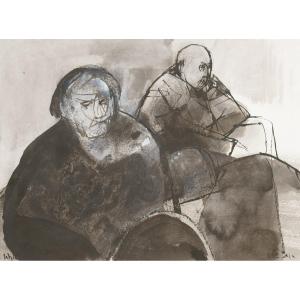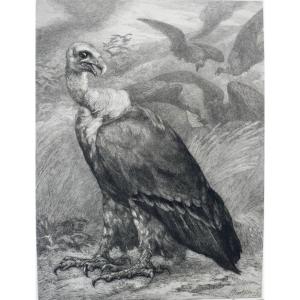- darkened,remains of an old mounting on the verso
- United inLaughter -
Here, HansFrank refers to the skull as a vanitas motif. In Renaissance and Baroqueportraits, this motif symbolizes the transience of the sitter, whose head hasbecome a skull over time. Penitents, such as St. Jerome, often hold skulls inmelancholy contemplation. Here, however, the boy stands up for life itself. Heboldly grabs the skull and laughs at the absurdity of life and death. Thelaughter of death joins the laughter of life, and vice versa. The child's thumbpenetrates the skull's cheekbone to illustrate the inseparable connectionbetween death and life.
About the artist
Hans Frankstudied at the Vienna School of Applied Arts from 1902 to 1906 and then studiedpainting under Franz Rumpler at the Vienna Academy of Fine Arts from 1907 to1911. In 1911, he received a substantial travel grant from the emperor, whichhe used to travel to Switzerland, Paris, London, Belgium, the Netherlands, andGermany. After serving in World War I, Frank moved to St. Marein im Mürztal,returning to Vienna in 1925. He took further study trips to Italy, southernFrance, and the Austrian countryside. In 1927, Frank became a member of theLondon Society of Color Printers. An exhibition of his work at the MediciGallery in London brought him international recognition. He joined the PasadenaPrintmakers Society of California and established contacts in Canada. Inaddition to his highly regarded paintings, Frank primarily worked as a graphicartist. He created over 300 prints and developed a new gradient technique forthe fern woodcut with his twin brother, Leo Frank. After World War II, theartist fell into obscurity and retired to Salzburg.


































 Le Magazine de PROANTIC
Le Magazine de PROANTIC TRÉSORS Magazine
TRÉSORS Magazine Rivista Artiquariato
Rivista Artiquariato